Sahaana Suri
Simple Embodied Language Learning as a Byproduct of Meta-Reinforcement Learning
Jun 14, 2023Abstract:Whereas machine learning models typically learn language by directly training on language tasks (e.g., next-word prediction), language emerges in human children as a byproduct of solving non-language tasks (e.g., acquiring food). Motivated by this observation, we ask: can embodied reinforcement learning (RL) agents also indirectly learn language from non-language tasks? Learning to associate language with its meaning requires a dynamic environment with varied language. Therefore, we investigate this question in a multi-task environment with language that varies across the different tasks. Specifically, we design an office navigation environment, where the agent's goal is to find a particular office, and office locations differ in different buildings (i.e., tasks). Each building includes a floor plan with a simple language description of the goal office's location, which can be visually read as an RGB image when visited. We find RL agents indeed are able to indirectly learn language. Agents trained with current meta-RL algorithms successfully generalize to reading floor plans with held-out layouts and language phrases, and quickly navigate to the correct office, despite receiving no direct language supervision.
Ember: No-Code Context Enrichment via Similarity-Based Keyless Joins
Jun 02, 2021
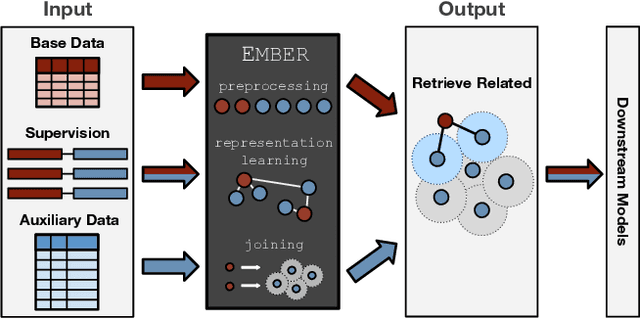
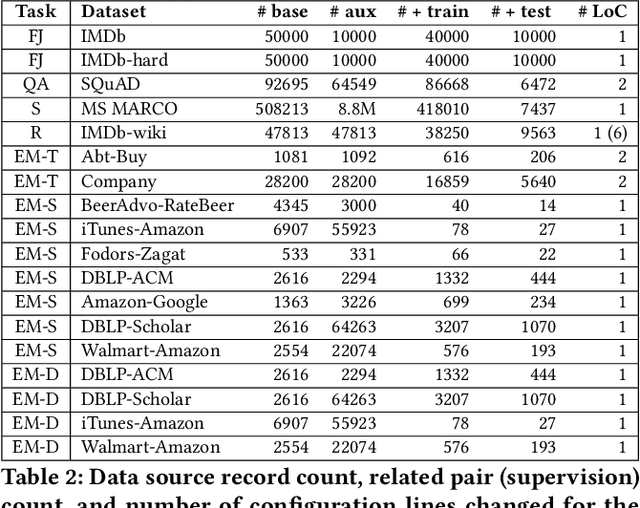

Abstract:Structured data, or data that adheres to a pre-defined schema, can suffer from fragmented context: information describing a single entity can be scattered across multiple datasets or tables tailored for specific business needs, with no explicit linking keys (e.g., primary key-foreign key relationships or heuristic functions). Context enrichment, or rebuilding fragmented context, using keyless joins is an implicit or explicit step in machine learning (ML) pipelines over structured data sources. This process is tedious, domain-specific, and lacks support in now-prevalent no-code ML systems that let users create ML pipelines using just input data and high-level configuration files. In response, we propose Ember, a system that abstracts and automates keyless joins to generalize context enrichment. Our key insight is that Ember can enable a general keyless join operator by constructing an index populated with task-specific embeddings. Ember learns these embeddings by leveraging Transformer-based representation learning techniques. We describe our core architectural principles and operators when developing Ember, and empirically demonstrate that Ember allows users to develop no-code pipelines for five domains, including search, recommendation and question answering, and can exceed alternatives by up to 39% recall, with as little as a single line configuration change.
Leveraging Organizational Resources to Adapt Models to New Data Modalities
Aug 23, 2020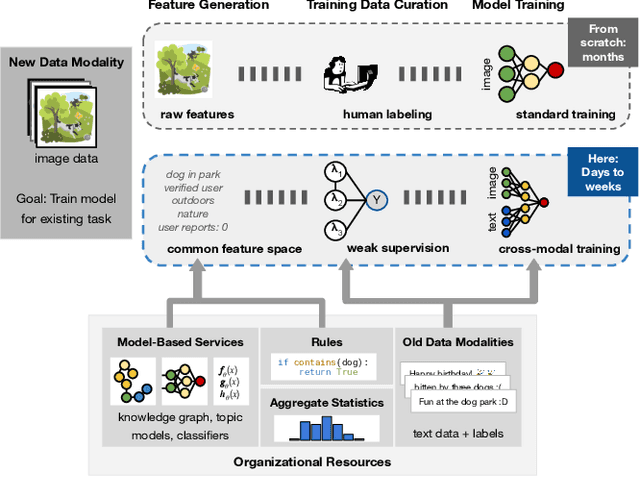

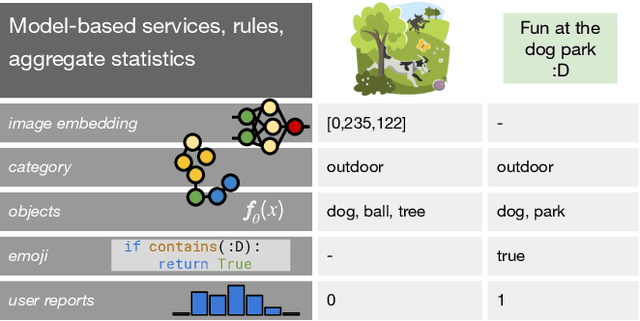

Abstract:As applications in large organizations evolve, the machine learning (ML) models that power them must adapt the same predictive tasks to newly arising data modalities (e.g., a new video content launch in a social media application requires existing text or image models to extend to video). To solve this problem, organizations typically create ML pipelines from scratch. However, this fails to utilize the domain expertise and data they have cultivated from developing tasks for existing modalities. We demonstrate how organizational resources, in the form of aggregate statistics, knowledge bases, and existing services that operate over related tasks, enable teams to construct a common feature space that connects new and existing data modalities. This allows teams to apply methods for training data curation (e.g., weak supervision and label propagation) and model training (e.g., forms of multi-modal learning) across these different data modalities. We study how this use of organizational resources composes at production scale in over 5 classification tasks at Google, and demonstrate how it reduces the time needed to develop models for new modalities from months to weeks to days.
CrossTrainer: Practical Domain Adaptation with Loss Reweighting
May 07, 2019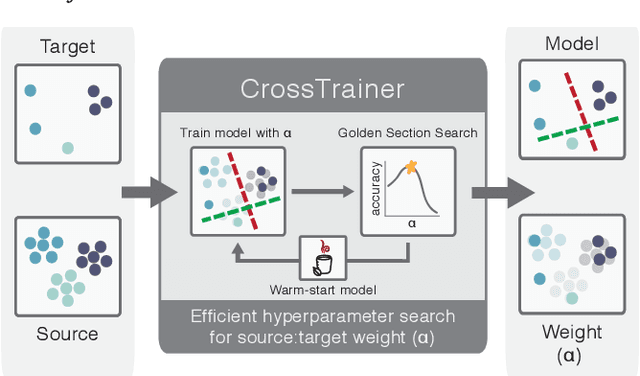
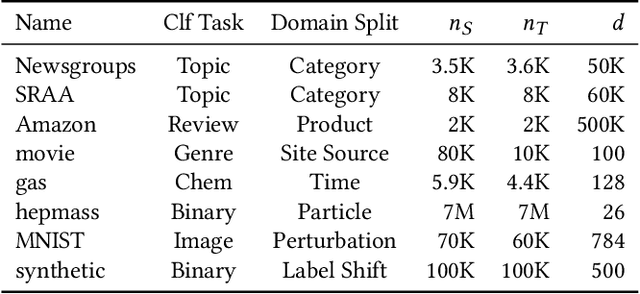
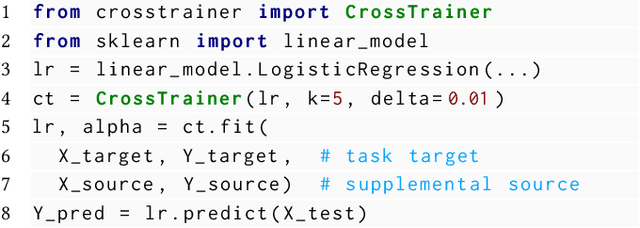
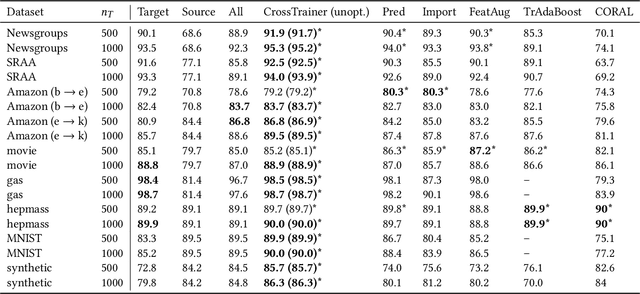
Abstract:Domain adaptation provides a powerful set of model training techniques given domain-specific training data and supplemental data with unknown relevance. The techniques are useful when users need to develop models with data from varying sources, of varying quality, or from different time ranges. We build CrossTrainer, a system for practical domain adaptation. CrossTrainer utilizes loss reweighting, which provides consistently high model accuracy across a variety of datasets in our empirical analysis. However, loss reweighting is sensitive to the choice of a weight hyperparameter that is expensive to tune. We develop optimizations leveraging unique properties of loss reweighting that allow CrossTrainer to output accurate models while improving training time compared to naive hyperparameter search.
 Add to Chrome
Add to Chrome Add to Firefox
Add to Firefox Add to Edge
Add to Edge